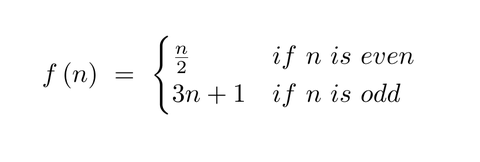For all the recent strides we’ve made in the math world, like how a supercomputer finally solved the Sum of Three Cubes problem that puzzled mathematicians for 65 years, we’re forever crunching calculations in pursuit of deeper numerical knowledge.
Some math problems have been challenging us for centuries, and while brain-busters like the ones that follow may seem impossible, someone is bound to solve ‘em eventually. Maybe.
For now, take a crack at the toughest math problems known to man, woman, and machine.
1. The Collatz Conjecture

Earlier this month, news broke of progress on this 82-year-old question, thanks to prolific mathematician Terence Tao. And while the story of Tao’s breakthrough is good news, the problem isn’t fully solved.
A refresher on the Collatz Conjecture: It’s all about that function f(n), shown above, which takes even numbers and cuts them in half, while odd numbers get tripled and then added to 1. Take any natural number, apply f, then apply f again and again. You eventually land on 1, for every number we’ve ever checked. The Conjecture is that this is true for all natural numbers.
Tao’s recent work is a near-solution to the Collatz Conjecture in some subtle ways. But his methods most likely can’t be adapted to yield a complete solution to the problem, as he subsequently explained. So we might be working on it for decades longer.
The Conjecture is in the math discipline known as Dynamical Systems, or the study of situations that change over time in semi-predictable ways. It looks like a simple, innocuous question, but that’s what makes it special. Why is such a basic question so hard to answer? It serves as a benchmark for our understanding; once we solve it, then we can proceed to much more complicated matters.





























Δεν υπάρχουν σχόλια:
Δημοσίευση σχολίου